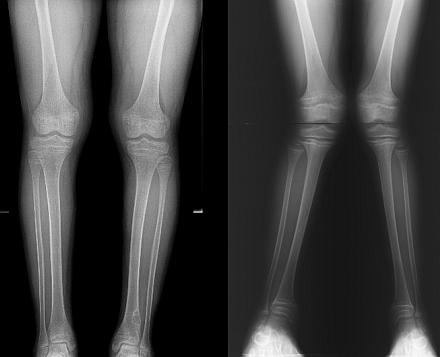De Toney - Debre - Fanconi syndrome is a severe congenital disease characterized by a variety of metabolic disorders. Most often, children of the first year of life suffer from it. As a rule, it occurs in combination with other hereditary pathologies, but it can also manifest as an independent syndrome.
A brief excursion into history
The disease was discovered and studied in 1931 by Dr. Fanconi from Switzerland. Examining a child with rickets, short stature and changes in urinalysis, he came to the conclusion that this combination of symptoms should be considered as a separate pathology. Two years later, de Toney introduced his amendments, added hypophosphatemia to the description that was already available, and some time later, Debreu revealed aminoaciduria in such patients.
In domestic literature, this condition is called the terms "hereditary de Tony-Debreu-Fanconi syndrome" and "glucoaminophosphate diabetes." Abroad, it is often referred to as renal Fanconi syndrome.
Causes of Fanconi Syndrome
At the moment, it was not possible to fully find out what lies at the basis of this serious ailment. Fanconi syndrome is presumably a genetic disease. Experts believe that the development of this pathology is associated with a point mutation, which leads to malfunctioning of the kidneys. Numerous studies have confirmed that cell metabolism is disturbed in the body. It is possible that adenosine triphosphate (ATP), a compound that plays an important role in energy exchange, is involved in the case. As a result of the incorrect functioning of enzymes, glucose, amino acids, phosphates, and other equally useful substances are lost. In such harsh conditions, the renal tubules do not receive the energy necessary for their work. Useful substances are excreted together with urine, metabolic processes are disrupted, rickets-like changes in bone tissue develop.

Fanconi syndrome in children is much more common than in adults. According to statistics, the frequency of pathology is 1: 350 000 newborns. Both boys and girls are sick in equal proportions.
Signs of Fanconi Syndrome
The disease can develop at any age, but most often it occurs in children of the first year of life. Glucosuria, generalized hyperaminoaciduria and hyperphosphaturia - this triad of symptoms characterizes Fanconi syndrome. Symptoms develop quite early. First of all, parents notice that their child begins to urinate more often, and he is constantly tormented by thirst. Kids, of course, cannot say this in words, but by their capricious behavior and constant hanging on their chest or bottle, it becomes obvious that something is wrong with the child.
In the future, frequent causeless vomiting, prolonged constipation and unexplained fever bring a lot of concern to parents . As a rule, at this stage the child finally gets to see a doctor. An experienced pediatrician may suspect that such a combination of symptoms does not look like a common cold. If the doctor is competent, he will be able to recognize Fanconi syndrome in time.
Symptoms meanwhile do not disappear. A marked lag in physical and mental development is added to them, pronounced curvatures of large bones appear. Typically, changes affect only the lower limbs, leading to deformity of the varus or valgus type. In the first case, the child's legs will be curved with a wheel, in the second - in the form of the letter "X". Both that and other option, of course, are unfavorable for the further life of the child.
Fanconi syndrome in children often includes osteoporosis (premature destruction of bone tissue), as well as significant growth retardation. Fractures of long tubular bones and paralysis are not excluded. Even if until now the parents have not worried about the condition of the baby, then at this stage they will definitely not refuse skilled assistance.
Fanconi syndrome in adults is quite rare. The fact is that this serious disease naturally leads to the development of renal failure. In this situation, it is impossible to give any unambiguous forecast and guarantee a longer life expectancy. In the literature, cases are described when, at the age of 7-8 years, Fanconi syndrome was losing ground, there was a noticeable improvement in the condition of the child and even recovery. Unfortunately, such options in modern practice are rare enough to make any serious conclusions.
Diagnosis of Fanconi syndrome
In addition to collecting an anamnesis and a thorough examination, the doctor will definitely prescribe some examinations to confirm this disease. Fanconi syndrome inevitably leads to impaired renal function, which means regular urinalysis will be mandatory. Of course, this is not enough to reveal all the features of the course of the disease. It is necessary to look not only the content of protein and leukocytes in the urine, but also try to detect lysozyme, immunoglobulins and other substances. The analysis will also necessarily reveal a high content of sugar (glucosuria), phosphates (phosphaturia), significant losses of substances important for the body will be visible. A similar examination can be performed both on an outpatient basis and in a hospital setting.

Some changes are also inevitable in blood tests. A biochemical study shows a decrease in almost all significant trace elements (primarily calcium and phosphorus). A pronounced metabolic acidosis develops that interferes with the normal functioning of the whole organism.
X-ray of the skeleton will show osteoporosis (destruction of bone tissue) and deformation of the limbs. In most cases, there is a lag in bone growth rates and their inconsistency with biological age. If necessary, the doctor can prescribe an ultrasound of the kidneys and other internal organs, as well as an examination with related specialists.
Differential diagnosis
There are times when some other diseases are disguised as Fanconi syndrome. The doctor has a difficult task to figure out what is really happening with the small patient. Glucoaminophosphate diabetes is sometimes confused with chronic pyelonephritis and other kidney diseases. Changes in urine tests, as well as the characteristic features of bone damage, will help the pediatrician make the correct diagnosis.
Fanconi Syndrome Treatment
It is worth considering the fact that this pathology is chronic. It is quite difficult to completely get rid of unpleasant symptoms, you can only reduce the manifestations of the disease for some time. What does modern medicine offer as an aid to sick children?
In the first place is the diet. Patients are advised to limit their intake of salt, as well as all hot and smoked foods. Milk and various fruit sweet juices are added to the diet. Do not forget about foods rich in potassium (prunes, dried apricots and raisins). In the event that the deficiency of trace elements has reached a critical stage, doctors prescribe the intake of special vitamin complexes.
Against the background of the diet, large doses of vitamin D. This is necessary in order to timely identify the onset of hypervitaminosis and reduce the dose of vitamin D. The treatment is long, long courses, with interruptions. In most cases, this therapy helps to restore impaired metabolism and prevent serious complications.
If the disease has gone far, the patient falls into the hands of surgeons. Experienced orthopedists will be able to correct bone deformities and significantly improve the child's standard of living. Such operations are performed only in the case of persistent and prolonged remission: at least one and a half years.
Forecast
Unfortunately, the prognosis for such patients is poor. In most cases, the disease progresses slowly, sooner or later leading to renal failure. Deformations of skeleton bones inevitably lead to disability and a deterioration in the overall quality of life.
Is it possible to avoid this pathology? Undoubtedly, a similar question excites everyone who has encountered Fanconi syndrome. Parents are trying to understand what they did wrong and where they did not keep track of the child. It is equally important to know whether a repetition of the situation with other children threatens. Unfortunately, preventive measures are not currently developed. Couples planning to have another child should consult with a geneticist to obtain more complete information about their concern.
Wissler's syndrome - Fanconi (allergic subsepsis)
This disease is described only in children from 4 to 12 years. The reason for this serious pathology is still not known. It can be assumed that this syndrome is a typical autoimmune disease, a special form of rheumatoid arthritis. It always begins acutely, with a rise in temperature, which for weeks can stay at a figure of 39 degrees. In all cases, a polymorphic rash appears on the limbs, sometimes on the face, chest or abdomen. Recovery usually occurs without any serious complications. However, some small patients develop severe joint damage over time, leading to disability.